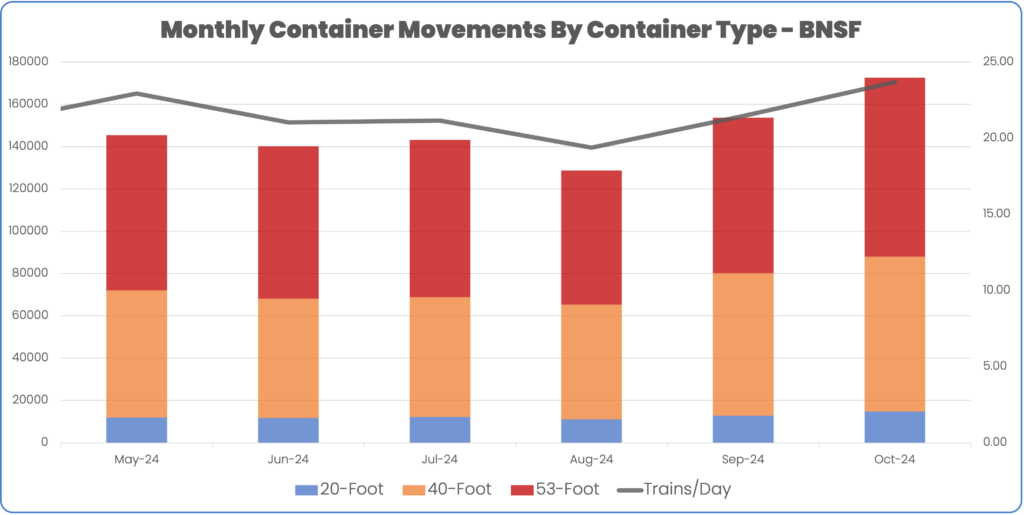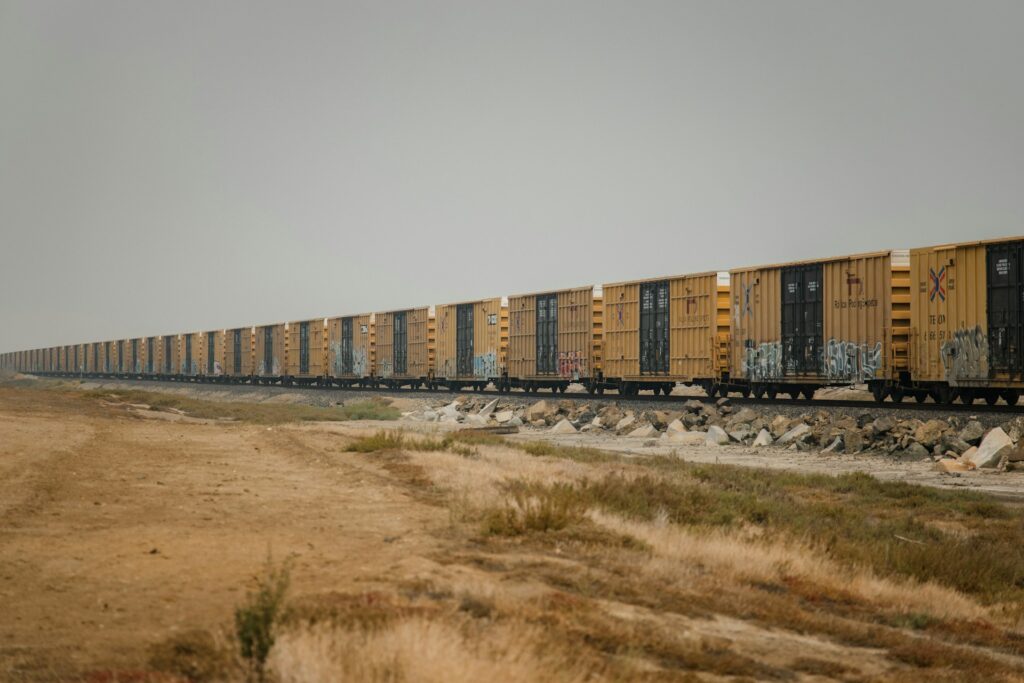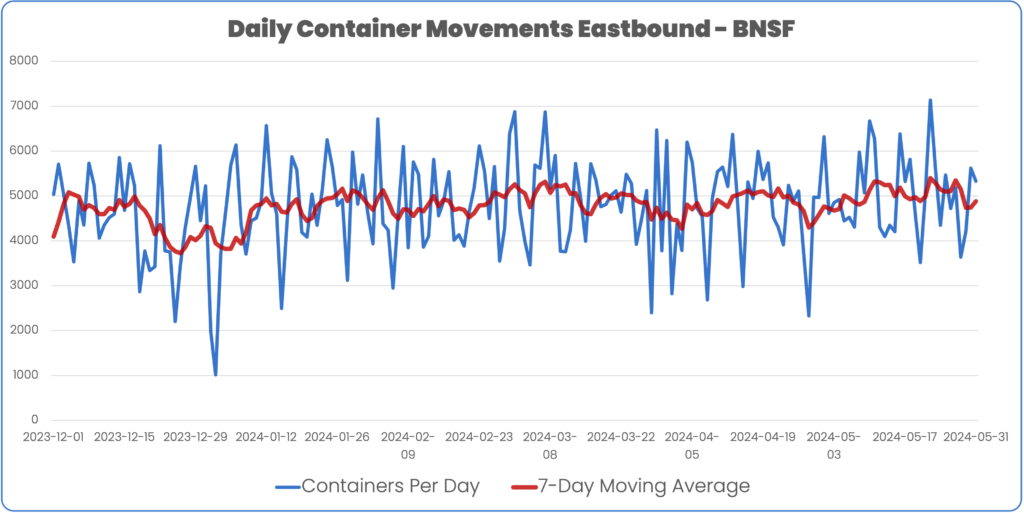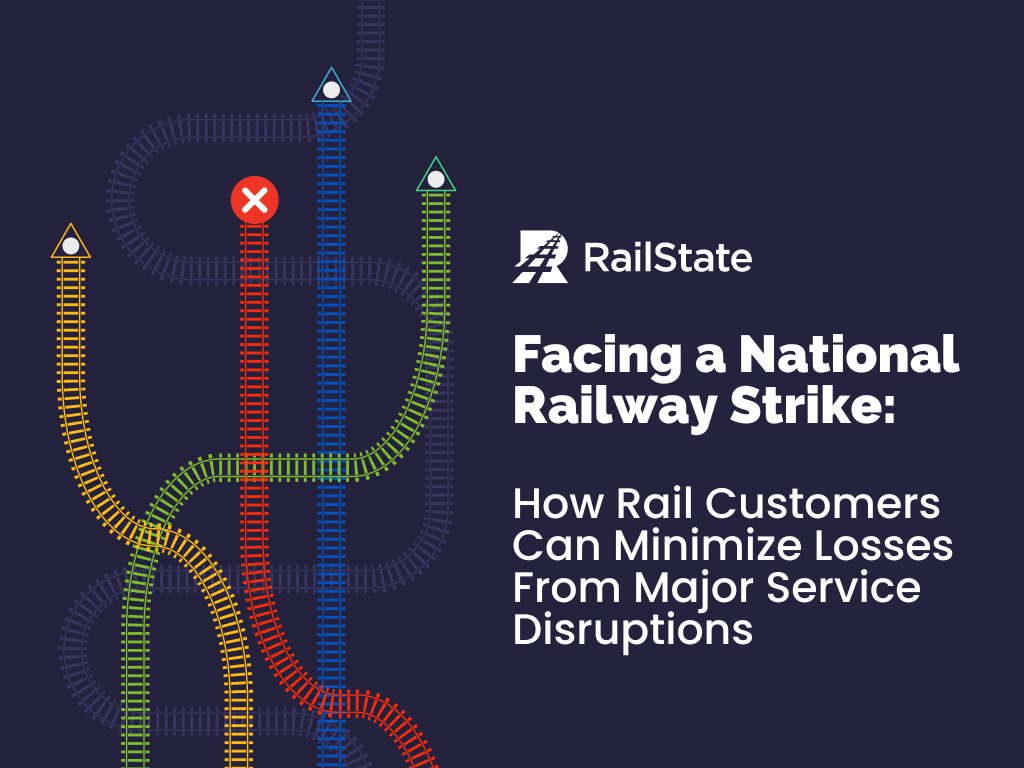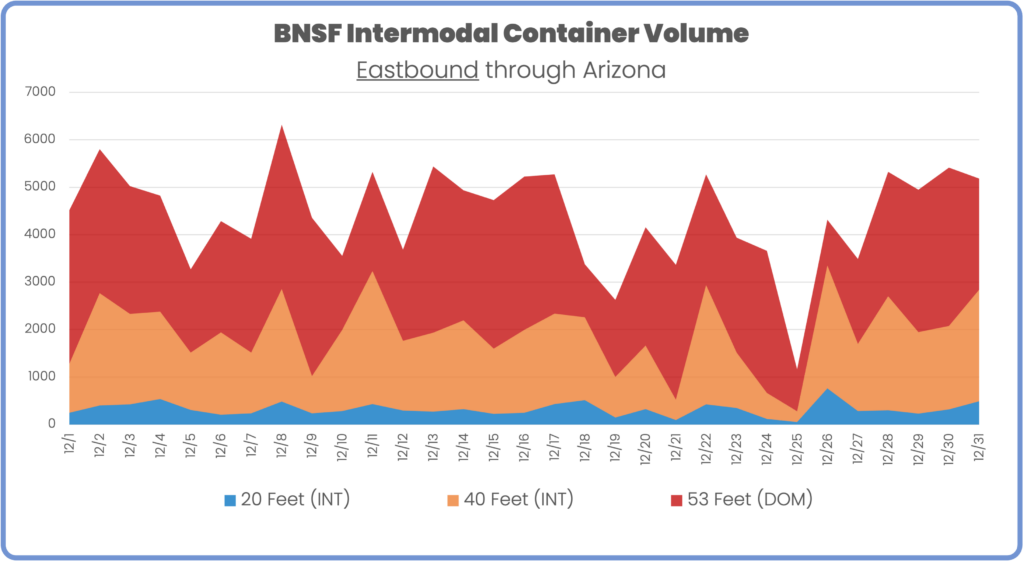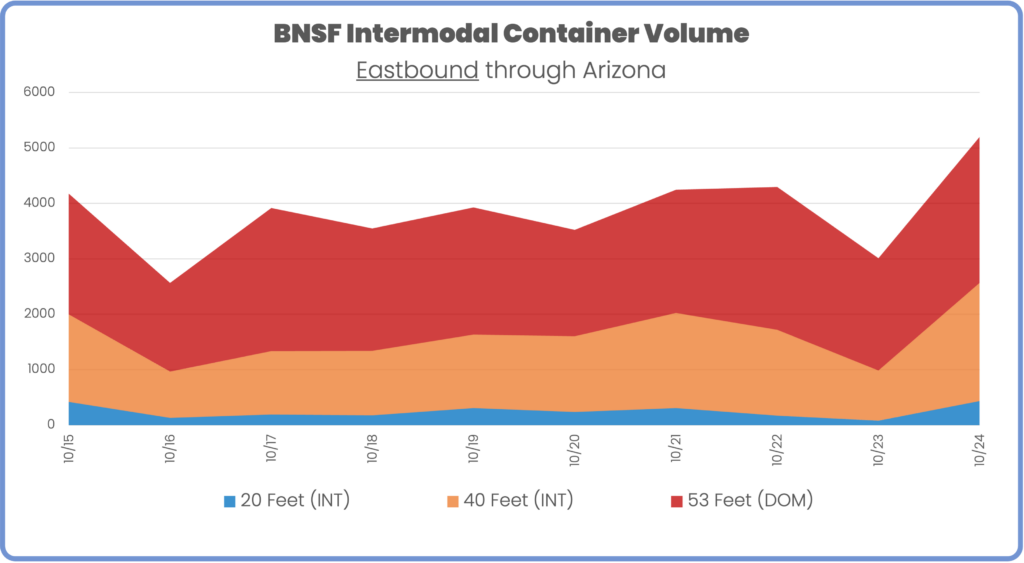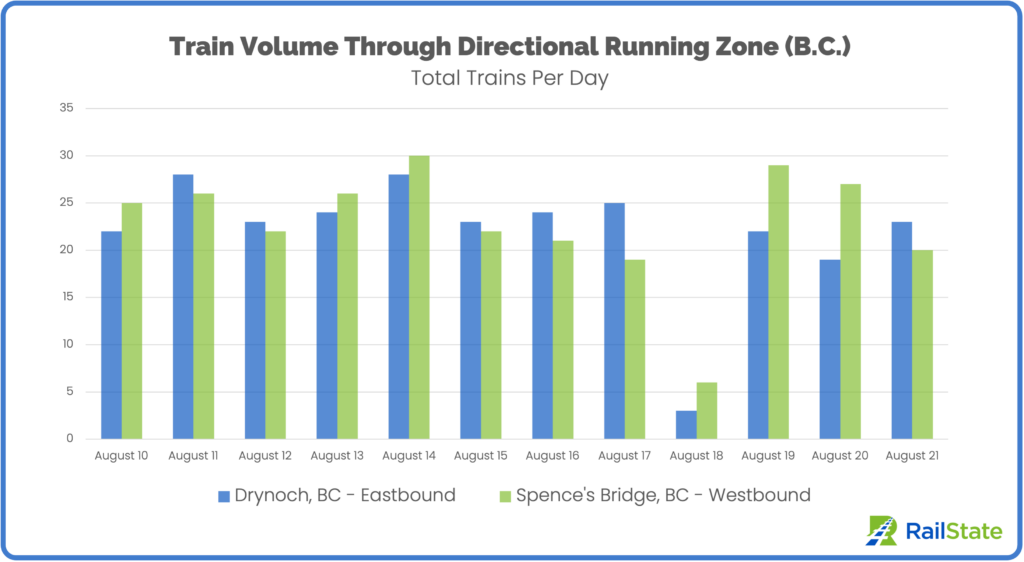October was the strongest month for eastbound intermodal through the US Southwest that RailState has ever recorded. BNSF and UP moved 280,660 containers combined, driven by an import surge from Asia.
- How it works
- Who it’s forShippersPublic SectorFinancial
- Use casesShippersPublic SectorFinancial
- Resources
- Company
- How it works
- Who it’s forShippersPublic SectorFinancial
- Use casesShippersPublic SectorFinancial
- Resources
- Company

